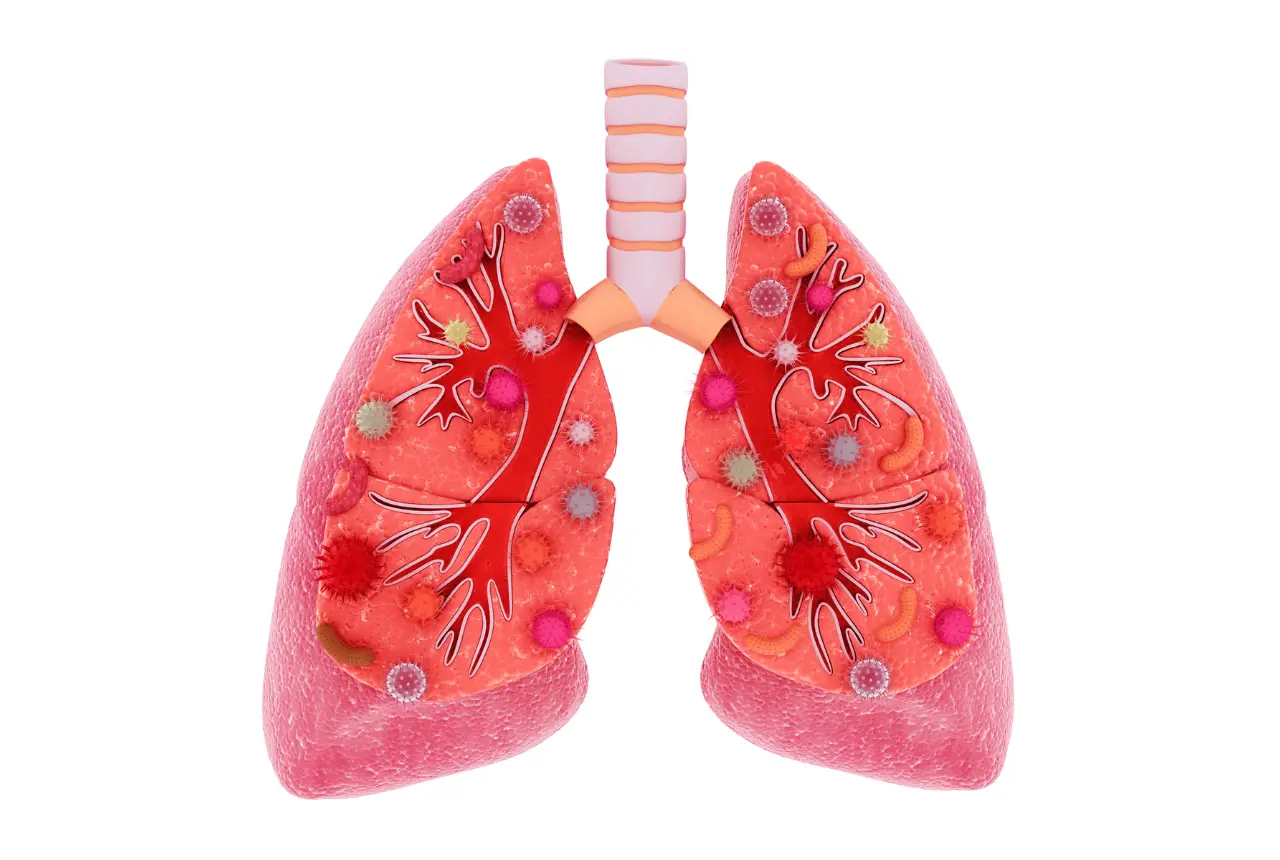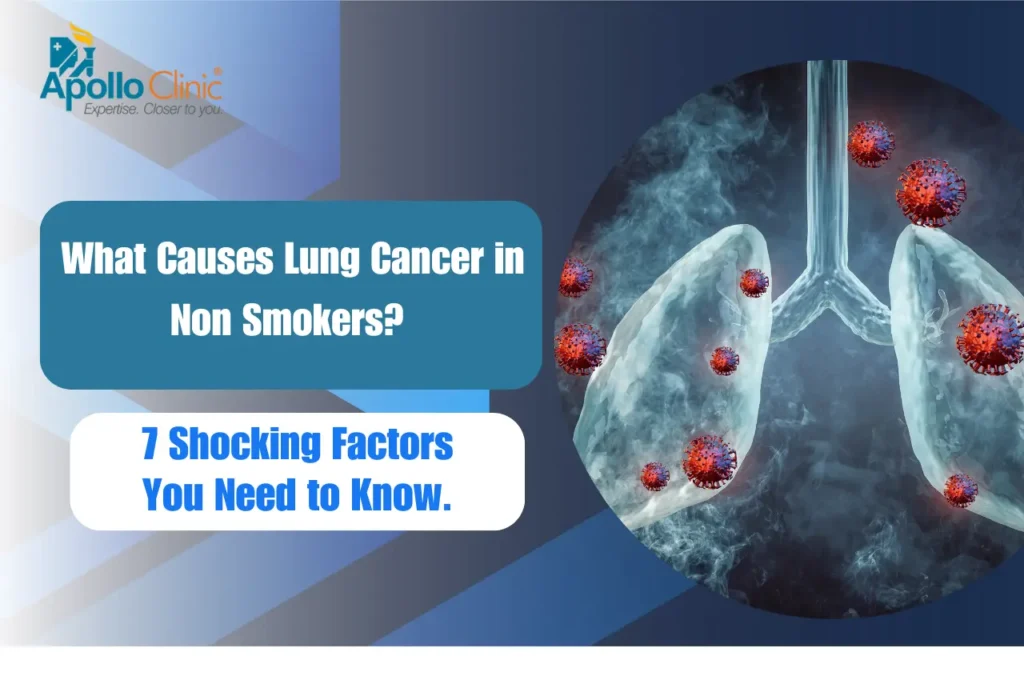What Causes Lung Cancer in Non Smokers? 7 Shocking Factors You Need to Know.
Lung cancer, often referred to as a smoker’s disease, casts a long shadow of fear. According to the Global Adult Tobacco Survey of India, over 29% of India’s population are tobacco users. In India, it kills over 1.35 million people every year. But this blog is not about smokers, this is about what causes Lung Cancer in Non Smokers.
A startling truth emerges: a significant portion of lung cancer cases occur in individuals who have never touched a cigarette. This revelation underscores the complexity of the disease and the importance of understanding the diverse factors that contribute to its development.
What Causes Lung Cancer in Non Smokers? 7 Factors to Know
While smoking indisputably stands as the leading cause of lung cancer, it’s far from the only culprit. Approximately 10-20% of lung cancer diagnoses afflict non-smokers, a sobering statistic that demands attention. This group of individuals often faces a unique set of challenges, as the usual suspects – tobacco-related carcinogens – are absent from their lifestyle.
It’s essential to dispel the misconception that lung cancer is solely a smoker’s affliction. This disease respects no boundaries, and its causes are multifaceted. By understanding the various factors that contribute to lung cancer in non-smokers, we can empower individuals to take proactive steps toward prevention and early detection.
#1: Secondhand Smoke Exposure

The invisible threat of secondhand smoke looms large in the lives of non-smokers. Breathing in the toxic fumes exhaled by smokers exposes individuals to a potent cocktail of harmful chemicals.
From homes and workplaces to social gatherings, the risk of secondhand smoke exposure is pervasive. The carcinogens lurking within this insidious smoke wreak havoc on lung tissue, gradually increasing the likelihood of developing lung cancer. Studies have consistently linked secondhand smoke exposure to a substantial portion of lung cancer cases in non-smokers.
#2: Radon Gas: An Invisible Menace

Radon, a colorless and odorless radioactive gas, emanates from the natural decay of uranium in soil and rocks. It can seep into homes and buildings through cracks in foundations and walls. Prolonged exposure to elevated radon levels poses a significant health risk, including an increased risk of lung cancer.
This is particularly concerning for non-smokers, as the combination of radon exposure and other factors can amplify the danger. Thankfully, inexpensive radon tests are available to assess indoor levels, and mitigation steps can be taken to reduce exposure.
#3: Air Pollution: A Silent Killer

The air we breathe is not always clean and pure. Air pollution, a complex mixture of harmful particles and gases, infiltrates our environment from various sources, including industrial emissions, vehicle exhaust, and power plants. These pollutants, such as particulate matter and ozone, can penetrate deep into the lungs, causing inflammation and cellular damage.
Over time, chronic exposure to air pollution can contribute to the development of lung cancer, even in individuals who have never smoked. While we can’t eliminate air pollution entirely, steps like using air purifiers, reducing time spent outdoors during periods of high pollution, and supporting policies that promote cleaner air can help mitigate the risk.
#4: Workplace Exposures: Hidden Hazards

Many occupations expose workers to harmful substances that can damage the lungs. Asbestos, a once widely used building material, is notorious for its link to lung cancer. Diesel exhaust, found in various industries, also poses a significant risk.
Additionally, exposure to certain chemicals, such as benzene and formaldehyde, can increase the likelihood of developing lung cancer. It’s crucial for employers to implement strict safety measures and for workers to be aware of potential hazards and utilize protective equipment. Regular monitoring and health screenings are essential for individuals working in high-risk environments.
#5: Family History: Genetic Predisposition

Genetics play a role in determining an individual’s susceptibility to various diseases, including lung cancer. Having a family history of lung cancer, even in the absence of smoking, can increase one’s risk. This is due to inherited genetic mutations that can weaken the lungs’ defense mechanisms.
While genetic predisposition doesn’t guarantee the development of lung cancer, it highlights the importance of early detection and regular screenings for individuals with a family history.
#6: Pre-existing Lung Conditions: A Vulnerable Target

Individuals with pre-existing lung conditions, such as chronic obstructive pulmonary disease (COPD) or asthma, are at an elevated risk of developing lung cancer. The underlying damage to lung tissue created by these conditions creates a fertile ground for cancerous cells to proliferate.
Proper management of lung diseases through medication, lifestyle modifications, and regular check-ups is crucial in reducing the risk of lung cancer.
#7: The Unknown: Unraveling the Mysteries

Despite significant advancements in lung cancer research, there are still many unanswered questions. A portion of lung cancer cases in non-smokers remains unexplained, suggesting the involvement of other yet-to-be-identified factors. Ongoing research is dedicated to uncovering these hidden contributors, which may include environmental toxins, emerging pollutants, or previously unknown genetic variations.
Conclusion
Lung cancer is a complex disease with multiple causes, and non-smokers are not immune to its devastating impact. By understanding the various factors that contribute to lung cancer risk, individuals can take proactive steps to protect their lung health. Secondhand smoke exposure, radon gas, air pollution, workplace hazards, family history, pre-existing lung conditions, and unknown factors all play a role in the development of this disease.
Early detection is crucial for improving outcomes, so it’s essential to be aware of the symptoms and to consult with a healthcare provider for regular check-ups. Together, we can raise awareness about lung cancer in non-smokers and support research efforts to find a cure.


